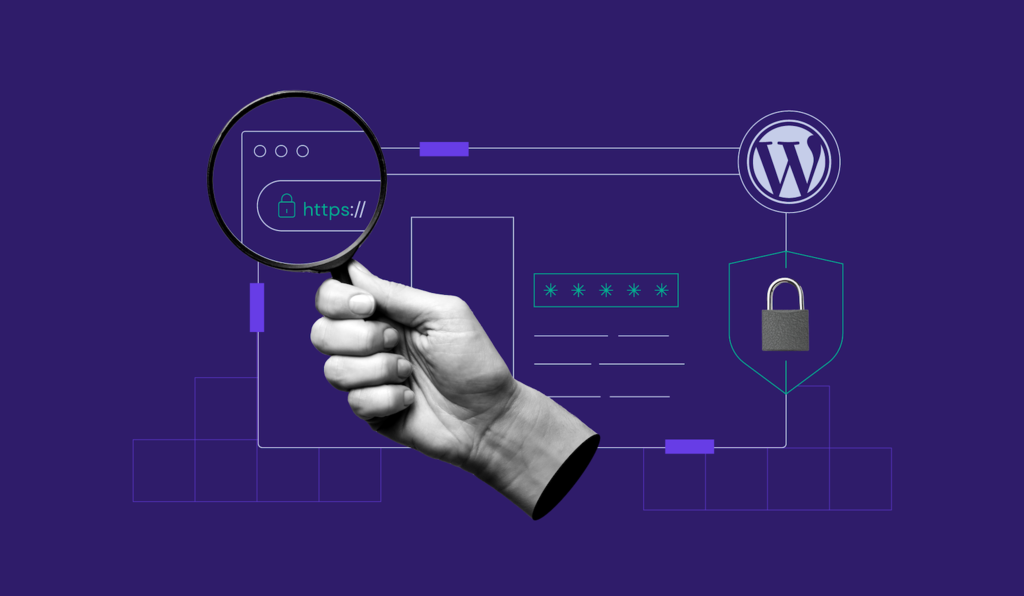
There are several ways you can backup a website. There are three types of backup: Manually (offline), CodeGuard, and CodeGuard. No matter which method you use, it is important to have a backup copy of your website somewhere safe that is separate from your web server. You can then rebuild your website exactly how it was when the backup was created.
Manually
While it's possible to backup a few websites manually, it can be time-consuming if there are hundreds or thousands. Websites are not only a collection file, they also include a database with settings and text that you should back up. Manually backing up a website can also cause the website to run slower and cause you to lose files. This problem can be avoided by using an external service that will backup your site.
When backing up your website, you should back it up regularly. This will help protect your site against unforeseen errors or failures like a server crash. This will protect your site from being unavailable for any length of time. You can lose revenue as well as customer trust. It can be very costly to build a website again from scratch. Customers will not trust you as much.

Offline
To backup a website, simply download the whole site and save it offline. This will act as an extra layer of protection against hacking or server failure. If the online copy is lost or stolen, an offline version of your website will be available.
Luckily, there are several ways to do this. Site backups typically involve dumping the site's database into an archive. It might also include your theme or layout. You can purchase a more robust backup solution for an extra fee. The best option will depend on the type of website you own and how often you want to back it up.
You can also download your site offline using an FTP client. To accomplish this, you will need to have access to FTP via a webbrowser. To access your hosting account, you will need the username and password. To create a mirror copy of your website, you can also use a website copying tool to download all files on your website.
CodeGuard
CodeGuard allows you to automatically back up your website and other data even if you haven't made any changes. It will monitor your website for potential changes and make backups when it does. You can also remove your website or database, and then restore it. The dashboard lets you monitor the progress of your backup and make adjustments, if needed.

First, connect to your website via your FTP credentials. CodeGuard will then display a list all files on your server including WordPress files. You can now select the data you wish for restoration and proceed to the next stage. Once the backup process is complete, a new screen will appear letting you know that the backup was successful.
CodeGuard provides an automated website backup that stores your backup data on a cloud-based platform. It features an easy-to-use restore feature and protects backup data with a 256bit AES encryption key. In addition, the backup program continuously monitors your website to detect changes and alert you to them.
FAQ
What is a static web site?
A static website can be hosted anywhere including Amazon S3, Google Cloud Storage (Google Cloud Storage), Windows Azure Blob storage and Rackspace Cloud files. A static site can be deployed to any platform that supports PHP. This includes WordPress, Drupal Joomla! Magento PrestaShop, Magento and Joomla!
Static websites are typically easier to maintain, as they don’t have to constantly send requests between servers. Because they don't send any requests back-and-forth between servers, static web pages load much faster. These are just a few reasons why static web pages can be a better option for small companies who don't have the resources or time to maintain a website.
How much does a website cost?
The answer depends on what you are trying to achieve with your website. For instance, if you just want to post information about yourself or your business, you might be able to get away with free services such as Google Sites.
However, if visitors are serious about coming to your site, they will be willing to pay more.
The most common solution is to use Content Management Systems (like WordPress). These programs enable you to create a website in no time. You won't be hacked because these websites are hosted by third parties.
Squarespace offers a great way to build your website. There are a number of plans available, with prices ranging from $5 per Month to $100 Per Month depending on the features you wish to add to your website.
How To Create A Static Website
There are two options available to you when building your first static website.
-
Content Management System, also known as WordPress. WordPress is available as a download. Then you can use it to create an essential website.
-
Create a static HTML website: You'll need to code your HTML/CSS code. This is easy if you know HTML.
You might consider hiring an expert to design your website if you are planning to build a large site.
But starting, you should probably go with option 2.
Can I make my website using HTML and CSS?
Yes, you can! It's possible! You need to have basic knowledge in web design and programming languages, such as HTML (Hyper Text Markup Language), CSS and Cascading Style sheets (Cascading CSS Sheets). These languages allow you create websites that can be viewed by anyone with internet access.
Statistics
- It's estimated that chatbots could reduce this by 30%. Gone are the days when chatbots were mere gimmicks – now, they're becoming ever more essential to customer-facing services. (websitebuilderexpert.com)
- Did you know videos can boost organic search traffic to your website by 157%? (wix.com)
- When choosing your website color scheme, a general rule is to limit yourself to three shades: one primary color (60% of the mix), one secondary color (30%), and one accent color (10%). (wix.com)
- It enables you to sell your music directly on your website and keep 100% of the profits. (wix.com)
- The average website user will read about 20% of the text on any given page, so it's crucial to entice them with an appropriate vibe. (websitebuilderexpert.com)
External Links
How To
How can I start as a UI Designer
There are two ways to become a UI designer:
-
You can also go to school and get a degree as UI Design.
-
You can start freelance.
To go to school, you will need to enroll in college or university for four years. This includes art, computer science, business, marketing, psychology, etc.
You can also enroll in classes at state universities or community colleges. Some schools offer free programs; others charge tuition fees.
After graduation, you will need to find employment. If you decide to work for yourself, it is important that you build your client base. You should network with other professionals to let them know that you exist.
Internships are also available at web application development companies. Many companies hire interns before they hire full-time staff.
A portfolio will help you get more work once you have established it. Your portfolio should contain your work samples and details of the projects you worked on.
It is a smart idea to send potential employers your portfolio via email.
As a freelancer, you will need to market yourself. Advertise your services on job boards such as Indeed, Guru, Guru, and Upwork.
Freelancers frequently receive assignments from recruiters who post jobs online. These recruiters look for qualified candidates to fill specific positions.
These recruiters often provide a briefing detailing the job requirements to the candidate.
Freelancers are not required by law to sign any long-term agreements. If you want to move ahead, it's best to negotiate an initial payment.
Many designers prefer working directly for clients and not through agencies. While this may seem ideal, many people lack the necessary skills.
Agency workers often have extensive industry knowledge. They can also access specialized training and resources that will allow them to produce top-quality work.
Agency workers also receive higher hourly rates.
One downside to working through an agency is the inability to have direct contact at work with the employer.
To succeed as a UI designer, you must be self-motivated, creative, organized, flexible, detail-oriented, analytical, and communicative.
Also, you must have excellent communication skills both verbally and in writing.
UI designers are responsible in designing websites through the creation of user interfaces (UI), as well visual elements.
They are also responsible for ensuring that the site meets the needs of its users.
This requires understanding what information visitors want and how the website should function.
Wireframes can be created by UI designers with a variety tools. Before they begin designing, wireframing allows them to visualize the page's layout.
You can find wireframe templates online. This makes it easy to make your own wireframes.
Some designers are solely focused on UI design while others blend UI design and graphic design.
Photoshop is used to edit images by graphic designers.
Adobe InDesign is used to create layouts and pages.
Photographers capture images using digital cameras or DSLRs.
The photos are then uploaded to a photo editing software where text captions, filters and other effects can be added.
Afterward, the photographer saves the image in a file format compatible with the website.
It is important that you consider all aspects of web design when creating a website.
This includes research as well planning, wireframing. prototyping. testing. coding. content creation. and publishing.
Research - It's essential to conduct thorough research before starting a new project.
Planning – After you've done your research you'll be ready to develop a plan.
Wireframing is a preliminary sketch for a web page, or application.
Prototyping - Prototypes help ensure that the final product matches the initial vision.
Testing - It is important to test the prototype several times in order to make sure it works.
Coding – Coding is the art of writing computer codes.
Content Creation – This covers everything from creating copy to managing social accounts.
Publishing involves uploading files on a server to ensure that the site is accessible.
You'll need to be able to understand the different projects you work on as a freelance UX/UI Designer.
Some companies require only wire frames, others require complete prototypes.
Depending on which type of project you accept you might be asked to do specific tasks.
For example, if you're hired to create wireframes, you might be expected to create several wireframes over time.
You may need to develop a functional version of the site if you are hired to build a prototype.
It doesn't matter what kind of project it is, strong interpersonal skills are essential.
Since most clients hire freelancers based on referrals, you must build solid relationships with potential employers.
In addition, you must be able to communicate effectively both verbally and in writing.
A portfolio is an important component of any freelancers' arsenal.
It displays your work and shows your ability to produce high-quality results.
You can take care of this by creating a professional portfolio online.
The best way to get started is to find websites similar to yours.
Then, search these sites to see how each one presents its services.
After identifying the best practices that you believe to be most successful, you can go ahead and implement them.
You can also include links to your portfolio in your resume.